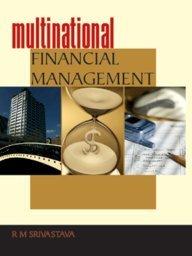
Lease versus purchase Northwest Lumber Company needs to expand its facilities. To do so, the firm must acquire a machine costing $140,000. The machine can be leased or purchased. The firm is in the 26% tax bracket, and its after-tax cost of debt is 11%. The terms of the lease and purchase plans are as follows: Lease The leasing arrangement requires end-of-year payments of $38,200 over five years. All maintenance costs will be paid by the lessor; insurance and other costs will be borne by the lessee. The lessee will exercise its option to purchase the asset for $22,000 at termination of the lease. Ignore any future tax benefit associated with the purchase of the equipment at the end of year 5 under the lease option. Purchase If the firm purchases the machine, its cost of $140,000 will be financed with a five-year, 14% loan requiring equal end-of-year payments of $40,780. The machine will be depreciated under MACRS using a 5-year recovery period. (See for the applicable depreciation percentages.) The firm will pay $2,000 per year for a service contract that covers all maintenance costs, insurance and other costs will be borne by the firm. The firm plans to keep the equipment and use it beyond its five-year recovery period. a. Determine the after-tax cash outflows of Northwest Lumber under each alternative. - X Data table b. Find the present value of each stream, using the after-tax cost of debt. c. Which alternative-lease or purchase-would you recommend? a. The after-tax cash outflow associated with the lease in years 1 through 4 is $ (Round to the nearest dollar.) Rounded Depreciation Percentages by Recovery Year Using MACRS for First Four Property Classes Percentage by recovery year Recovery 3 years 5 years 7 years 10 years year 1 33% 20% 14% 10% 2 45% 32% 25% 18% 3 15% 19% 18% 14% 4 7% 12% 12% 12% 12% 9% 9% 6 5% 9% 8% 7 9% 7% 8 4% 6% 9 6% 10 6% 11 4% Totals 100% 100% 100% These percentages have been rounded to the nearest whole percent to simplify calculations while retaining realism. To calculate the actual depreciation for tax purposes, be sure to apply the actual unrounded percentages or directly apply double-declining balance depreciation using the half-year convention 100% Help me solve this View an example Get more help Check







